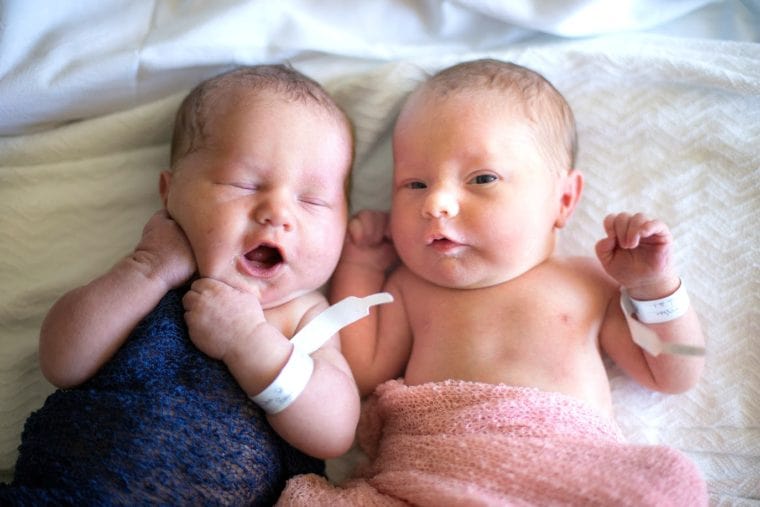Twins or Triplets Pregnancy - Multiple Gestation Care
Multiple pregnancy usually happens when more than one egg is fertilized by a man’s sperm. But it also can happen when one egg is fertilized and then splits into two or more embryos that grow into two or more babies.
Twins are called identical when one fertilized egg splits into two. Identical twins look almost exactly alike and share the exact same genes. Twins are fraternal when two separate eggs are fertilized by two separate sperm. Fraternal twins don’t share the same genes and are no more alike than any brothers and sisters from different pregnancies with the same mother and father.

How are multiples born?
If you’re pregnant with multiples, you’re more likely to have a cesarean birth (also called c-section) than if you’re pregnant with one baby. A c-section is surgery in which your baby is born through a cut that your doctor makes in your belly and uterus. Most triplets and higher-order multiples are born by c-section.
If you’re pregnant with twins, you may need a c-section if neither baby is in the head-down position or if you have other complications. You may be able to have a vaginal birth if:
» Both babies are in the head-down position and you have no other complications
» The lower twin is in the head-down position but the higher twin isn’t.
Vaginal birth is the way most babies are born. During vaginal birth, the uterus (womb) contracts to help push the baby out through the vagina.
Types of multiple pregnancies
» Twin pregnancy
» Triplet pregnancy
Management of high-risk pregnancy depends on the woman’s specific risk factors. In a high-risk pregnancy, healthcare providers keep a close watch on the woman and the pregnancy to detect any potential problems as quickly as possible so that treatment can start before the woman’s or fetus’s health is in danger.
Following conditions are listed to level as high risk pregnancy*

What are the Signs of a Multiple Pregnancy?
The only way to know if you’re pregnant with more than one baby during your pregnancy is through an ultrasound exam with your healthcare provider. During this test, your provider can look at images of the inside of your uterus and confirm how many babies are in there.
You might experience more intense symptoms during a multiple pregnancy than with a single pregnancy. These can include:
Apart from an ultrasound, your provider might suspect multiples if there’s more than one heartbeat detected during a fetal Doppler scan.
What complications are linked to multiple births?
» Premature labor and birth
» Preeclampsia or gestational hypertension (high blood pressure)
» Gestational diabetes
» Placenta abruption
» Fetal growth restriction
» Anemia.
» Miscarriage
How can being pregnant with multiples affect your babies’ health?
» Premature birth.
» Birth defects
» Growth problems
» Low birthweight (also called LBW)
» Twin-twin transfusion syndrome (also called TTTS)
» Neonatal death
Diagnosis of multiple pregnancies
You may perform the following diagnosis in the case of multiple pregnancies to avoid any complications at the time of delivery:
» HCG Testing
» Ultrasound
» Alpha-Fetoprotein

